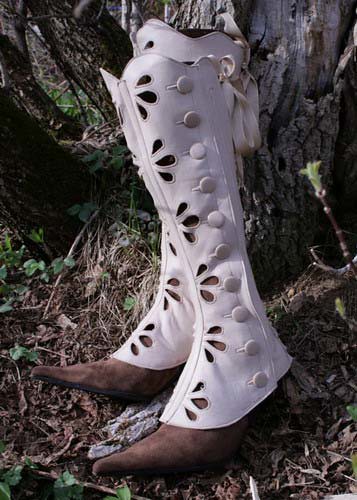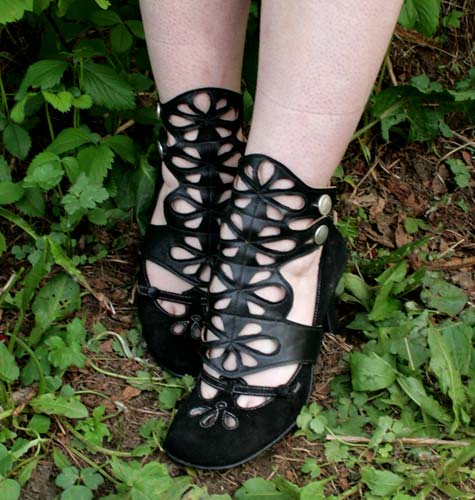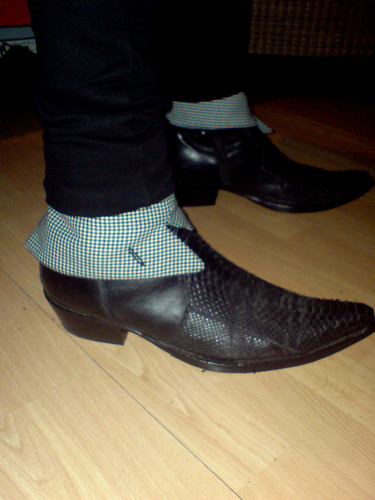About Clothe 22
From our very early beginnings we have clothed and adorned ourselves. Across cultures, countries and climates we use clothing to protect ourselves, communicate our culture and identity, and evolve who we are, reflecting our innate selves. At Clothe we believe in a world that celebrates diversity and authenticity. We advocate for the preservation, Read More
Something quick and cute this week. It caught my eye when putting together my last post on jodhpurs….
It’s Rationals
A popular name for full, pleated, serge* bloomers or knickerbockers worn by women for bicycling in the 1890’s. The name rationals comes from the political movement of the time that advocated a more rational or sensible approach to female dress. Rightly so! See also bloomers…
It’s Terminology Tuesday again and this week in the spotlight is…
Jodhpurs!
Pronounced “jod’poors”.
Riding pants, with a drop front or zipper closing, that flare at the thighs and have narrow, straight cut legs below the knee with cuffs at the ankles. Prior to the invention of stretch fabrics this design allowed for ease of movement of the legs and hips with the neat convenience of the slim lower leg. Most modern jodhpurs utilize the advances in textile technology and stretch fabrics to achieve this ease of movement with a slim silhouette.
An integral part of the “informal” habit worn by adults and children for horse riding shows. This outfit consists of a riding coat and jodhpurs, sometimes made of matched fabric sometimes contrasting. The colours most commonly worn are black, tan, blue and grey. A Derby hat may also be worn to complete the outfit.
A Riding Habit is defined as consisting of any combination of jacket, breeches, jodhpurs, and even the early 17th century calençons (long hose), doublet (the jacket), petticoat, justaucorps (a different jacket!) and various styles of riding skirts and dresses.
Not to be confused with Hunt Breeches, Riding Breeches or Riding Smalls which must have a drop down front and are usually made of canary or tan cavalry twill or doeskin with buckskin patches on the knees. These pants finished just below the knee and were worn with hose or long boots.
photo source: http://i1.wp.com/sharonlathanauthor.com/wp-content/uploads/breeches-collection.png
It’s Terminology Tuesday again and this week in the spotlight is…
Gaiters, Spats and Spatterdashes!
Check out these! Aren’t they just gorgeous!
It’s a crying shame that Les Frivolites appears to have stopped making them. Perhaps someone knows more? I so badly want some. Might need to get handy with my leather stock.
kneegaiterslsdemone2 by Les Frivolites
photo source:
gaitersummerblack4 by Les Frivolites
These are awesome for the men folk. Though more ankles cuffs than gaiters. Still…
http://www.flickr.com/photos/jackdiablo/3856004312/
But now to the point of the post…
Gaiters….
The Pope’s Swiss Guards.
Photo source: Flickr 23008537
Coverings for the legs and ankles, made of cloth or leather and buttoned, buckled or laced at the sides, secured by a strap under the foot.
Worn by men from the end of the 18th century to the early 20th century, the gaiter protects the leg and ankle from the dirt and grime of the wearers environment. Originating in the military, the gaiter was later adapted for civilian use.
A carved panel from The Arc de Triumphe, Paris depicting an artistic representation of significant french military history from late 1700’s to mid 1800’s. Spatterdashers or long Gaiters clearly worn by figure in right side of panel.
photo source: http://www.flickr.com/photos/42151532@N04/9290418429/
Unidentified Union Solider. date unknown. American Civil War 1861 to 1865.
photo source: http://www.flickr.com/photos/library_of_congress/5229199090/
From 1820 to 1840 (Victorian times), women and children also adopted the gaiter and then again in the 1890’s until the early 20th century.
Photo source: http://www.flickr.com/photos/93200061@N03/8478136082/
In the very groovy 1960’s the gaiter was again revisited in vinyl, leather, and cloth, though now for predominantly fashionable reasons.
Well that’s what the powers that be tell me but do you think I could find a suitable image to insert??? No siree.
However we can enjoy this lovely collage of 1960’s footwear…
Do you know your Derby’s from your Oxfords? Or you Boater from your Breton? Or in fact your plaid from your tartan? There is so much fashion terminology that we hear bandied about and it can get quite befuddling.
In the interest of…………….. well… interest, and clarity in moments of discourse regarding costume, I hereby officially pledge to share with you on Terminology Tuesday, each week a quick explanation of a quirky or curious costume term.
First up is:
The Mortar board

source: http://www.publicdomainpictures.net/view-image.php?image=62657&picture=mortar-board-graduate-cap
You know the one. This is the funny looking head wear of university and college graduates. It consists of a large square black brim attached horizontally to a cap.
Commonly worn with an academic robe featuring the colours representative of the faculty of study, this academic dress, has been in use since the 14th century.
Over time and in different cultures the rules and customs governing its use have diversified. However in many customs the large centrally attached tassel is positioned to the right before graduation and switched to the left afterwards. (So yep he has graduated.)
Other names used to refer to this item include: cater cap, corner cap, cornet, Oxford Cap, trencher cap, and square cap.
Go here to read the Wikipedia and a more comprehensive lowdown.
Happy Tuesday,
Bella
I grew up on a TV diet of “Countdown”, “FAME” and “The Muppet’s”. Yep! Says it all really. Oh, also David Attenborough and Harry Butler.
It all comes together in the long run. Nature, Biology, Costume, pop culture…. love it.
The Muppet’s have stood the test of time. Even my technology savvy children love the Muppet’s. The daggy jokes, on the money characterizations and ridiculous sketches. They, of course, get the added bonus of laughing at the out of date fashion. We do have to explain who the stars are, Leo Sayer is their favourite, and why wouldn’t he be? For the uninitiated, here is a classic episode of The Muppet’s featuring Leo Sayer and some spectacular Miss Piggy tantrums. It’s a full episode so only click if you have time. If not here is a quick bit of nostalgia to get you in the mood.
[youtube=http://www.youtube.com/watch?v=cE337D_V4vA&w=420&h=315]
Now for the Lessons (In no particular order):
Species: American Bald Headed Eagle.
Personal Colour Profile and Personality: Cool Winter (I’d rather say Ice Winter but there’s no such thing.)
Physical characteristics: Ice blue grey fur and feathers, balding on top of course. Bushy black knitted brow, prominent frowning beak, and saggy, eye bags.
What Sam’s style tells us about him: Given that he wears no clothing this is a bit of a challenge. However he does like on occasion to drape the American flag over his shoulders or at least use it as a backdrop. Sam sees himself as the upholder of America’s values of “goodness and wholesomeness” on the show. When you combine his patriotism with his cold, conservative, old age associated colour with that frowning, grumpy expression and you know immediately he’s going to be an inflexible, uptight, conservative pedant.
Here is one of my favourite Muppet scenes where Sam concedes to assisting Rowlf with a song. Something Sam considers well beneath him.
[youtube=http://www.youtube.com/watch?v=ueuA-9pqRok&w=420&h=315]
Lesson: No matter what you’re wearing if your body language says you’re a grumpy, stuck up, pain in the posterior, no amount of sunshine yellow and smiley faces will save you.

click for original image source.
Technically a member of Electric Mayhem but he’s kinda special so he gets a spot of his own.
Species: um pass… Neanderthal? Ok, human but behaving in an animalistic (sic) manner, hence the name.
Personal Colour Profile and Personality: Clear Spring / Warm, Clear and Bright
Physical characteristics: Wild, orange and red feathery hair with purple highlights. Bushy black eye brows, bulbous red nose, crooked white teeth and an enormous mouth.
What Animal’s style tells us about him: Well, for a start if its necessary for you to be restrained with a neck collar and chain then the message is pretty loud and clear.
Watch out! We have a LIVE one here!
Wild, uninhibited, feral and quite possibly mad, Animal is the delightful embodiment of the primal urges in all of us. One of the Muppet’s most popular characters and certainly one of mine. Animal’s look is seriously feral rock and roll of the 70’s kind. Tight leather, stomach revealing rope tied top, and rope belt, he’s like an out of control rock and roll pirate. Reminds me of a certain legendary wild man of music’s recent foray into film!
Lesson: All that crazy hair, revealing clothing, and use of leather and rope, Animal’s look is sexual, on the edge and easy to recognize. I think the greater lesson however is more in Animal’s immense popularity rather than his look. So many people can relate to the completely puerile, instinct driven, pleasure-seeking life view of Animal. In other words whilst we might not all dress like Animal, we’d like to be that free.
Reportedly, Frank Oz, who originally brought Animal to life, once said he had his character down to five words: sex, sleep, food, drums and pain.
He also said, “You don’t mess with Animal. He eats glass, man.”
The lesson….. embrace your inner Animal, its liberating. And don’t mess with a man who eats glass.
Perhaps we should all get ourselves a piece of rope for a belt and a neck chain?
Animaaaaaaaaaaaaaaaaaaaaaaaaaaaaaaaaaaaaaaaaaaaaall!!!!!!!!!!!!!!!!!!!!!!!!!!!!!!
P.S. I love Animal.
[youtube=http://www.youtube.com/watch?v=qisaGTajtvk&w=420&h=315]









![[Unidentified young soldier in Union sack coat, forage cap, and white gaiters with sword] (LOC)](http://farm6.staticflickr.com/5008/5229199090_34d7311503.jpg)
 Children’s Costumes, May 1849
Children’s Costumes, May 1849